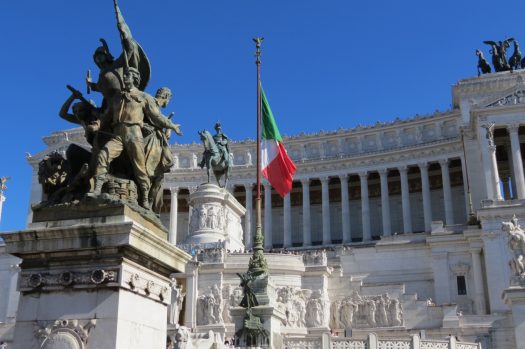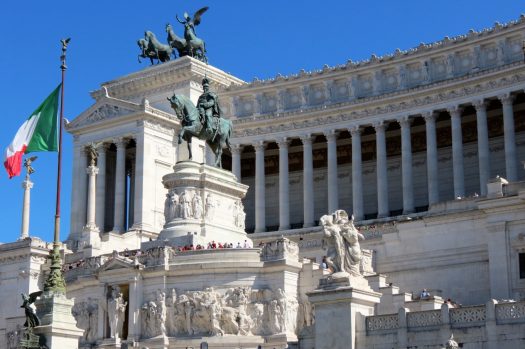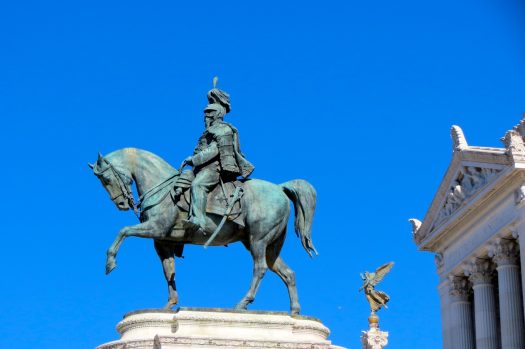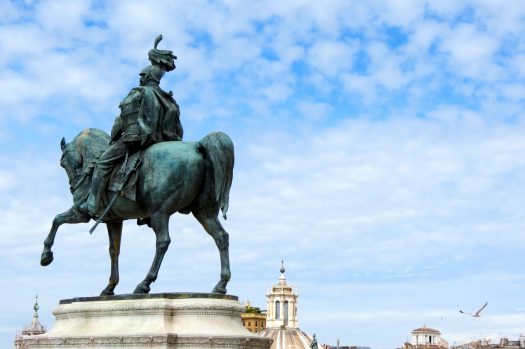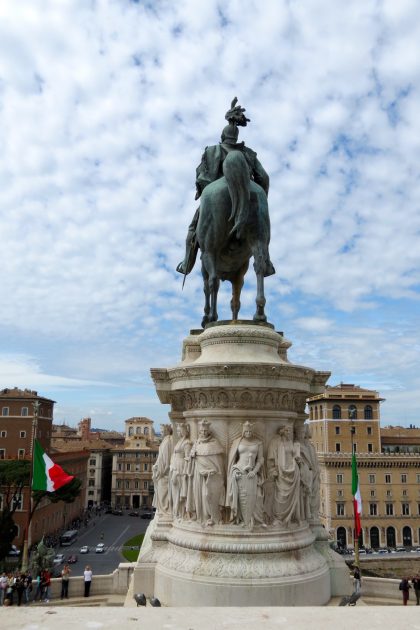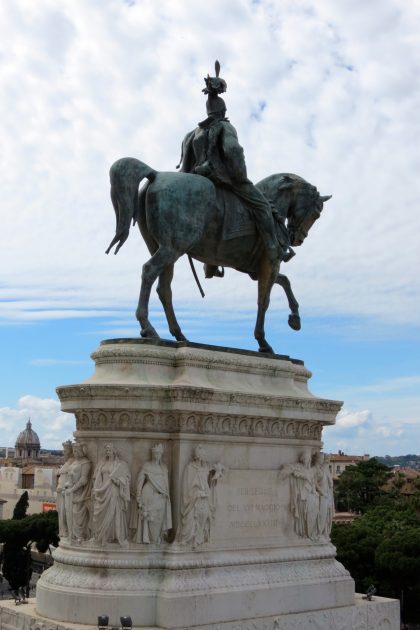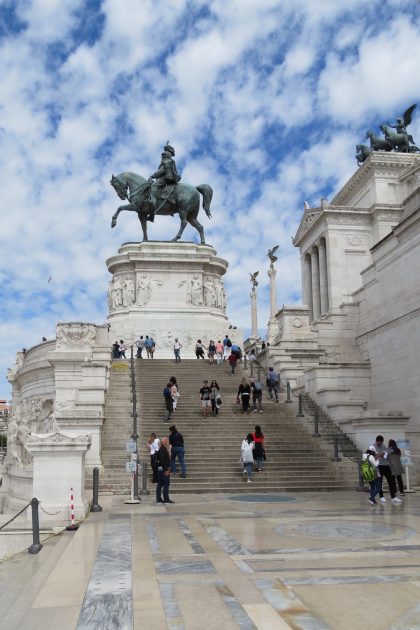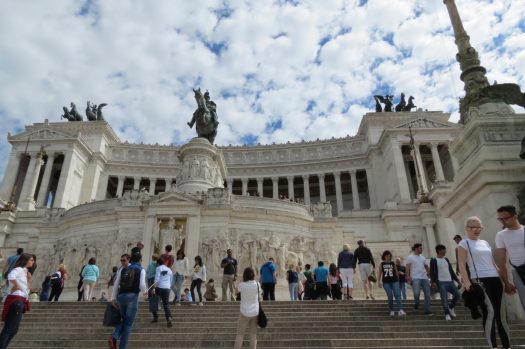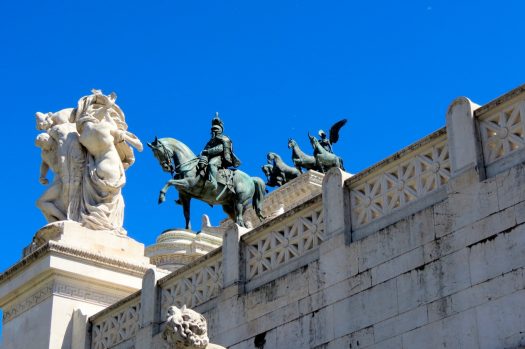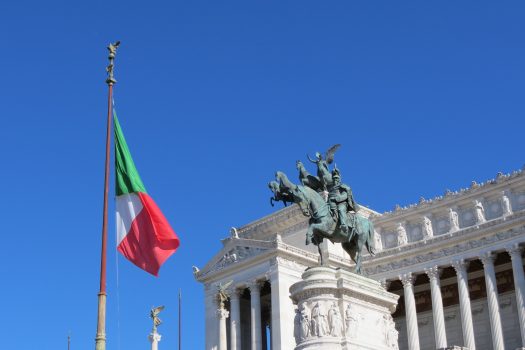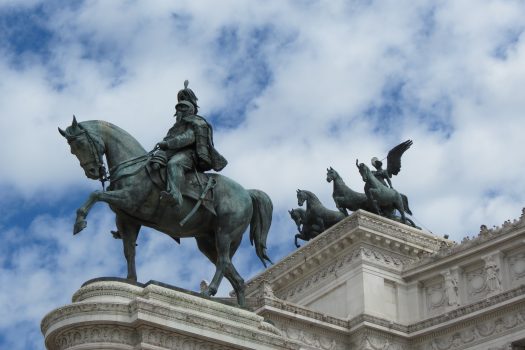- CountryItaly
- Town:Rome
-
Year of creation:1935
- Rider(s):Emanuele ll, Vittorio
(1820 – 1878) was the King of Piedmont, Savoy, and Sardinia from 1849 to 1861 and, from 1861 until his death in 1878, the first King of a united Italy.
Vittorio became King of Piedmont in 1849 when his father had abdicated the throne after a humiliating military defeat by the Austrians.
In 1852, he gave Count Camillo di Cavour the title of Prime Minister. This turned out to be a wise choice because Cavour was a political mastermind and a major player in Italian unification in his own right. Vittorio soon became the symbol of the Italian Risorgimento, the Italian unification movement.
The Italo-French campaign against Austria in 1859 started successfully. However, Napoleon III secretly made a treaty with Franz Joseph of Austria. Later that same year, Vittorio sent his forces to fight the papal army and drove the Pope into Vatican City. This success got him excommunicated from the Catholic Church.
Vittorio supported Giuseppe Garibaldi’s Expedition of Thousand (1860-1861), which resulted in the rapid fall of the Kingdom of the Two Sicilies in southern Italy. However, the King halted Garibaldi when he appeared ready to attack Rome, still under the Papal States, as it was under French protection. In 1860 Tuscany, Modena, Parma and Romagna decided to side with Sardinia-Piedmont. Vittorio subsequently met with Garibaldi at Teano, receiving from him the control of southern Italy. Another series of plebiscites in the occupied lands resulted in the proclamation of Vittorioin 1861 as the first King of Italy by the new Parliament of unified Italy. Turin became the capital of the new state. Only Rome, Veneto, and Trentino remained to be conquered.
In 1866 Vittorio allied himself with Prussia in the Third Italian War of Independence. Although not victorious in the Italian theater, he managed anyway to receive Veneto after the Austrian defeat in Germany. In 1870, after two failed attempts by Garibaldi, he also took advantage of the Prussian victory over France in the Franco-Prussian War to capture Rome after the French withdrew. He entered that city in 1870 and set up the new capital there in 1871.
Vittorio died in 1878, just after the reversal of excommunication by Pope Pius IX. He was buried in the Pantheon. His successor was his son Umberto I.
- Sculptor(s):Chiaradia and Gallori
Enrico Chiaradia (1851 – 1901) was an Italian sculptor.
Emilio Gallori (1846–1924) was an Italian sculptor, principally of historical monuments and religious statuary.
-
The equestrian statue of Vittorio Emanuele II in Rome is the centrepiece of a national monument built to honour the first king of a unified Italy. The monument was already controversial from its beginning, as the construction destroyed a large area of a medieval neighbourhood on Capitoline Hill. Many people rightly regard the monument itself, inaugurated in 1911 and completed in 1935, as pompous and too large. Due to its white colour and visibility from most of the city of Rome, the monument has several nicknames, such as ‘the wedding cake’ and ‘the typewriter’.
In April 1889, the sculptor Enrico Chiaradia was commissioned to create an equestrian statue, which was to be placed at the centre of the monument and would constitute its symbolic focus. Repeated quarrels and reciprocal accusations between the architect Guiseppe Sacconi and the sculptor slowed down the process. Sacconi thought Chiaradia’s equestrian statue was too realistic in its composition, in contrast with the classical character of the entire complex. Moreover, it seemed to the architect that both the horse and the rider, though of colossal dimensions – 12 metres tall and 10 wide – were out of proportion with the rest of the monument. On the other hand, the choice of an equestrian statue was not casual, since the intention was to continue the long classical tradition in which a ruler on a horseback was considered the perfect model to honour a ‘hero’.
When Chiaradia died in 1901, the statue was still unfinished. Another sculptor, Emilio Gallori, was commissioned to complete it. In 1906, the wax and then the plaster models were ready and the casting in bronze could begin. A grandiose enterprise, because of the great size as well as the division of the original model into various sections. These, when finally fused in 1911, weighed more than 50 tons. The equestrian statue was so large that on the occasion of a visit by King Vittorio Emanuele III to the site in 1910, a table was laid in the belly of the horse still under construction.
